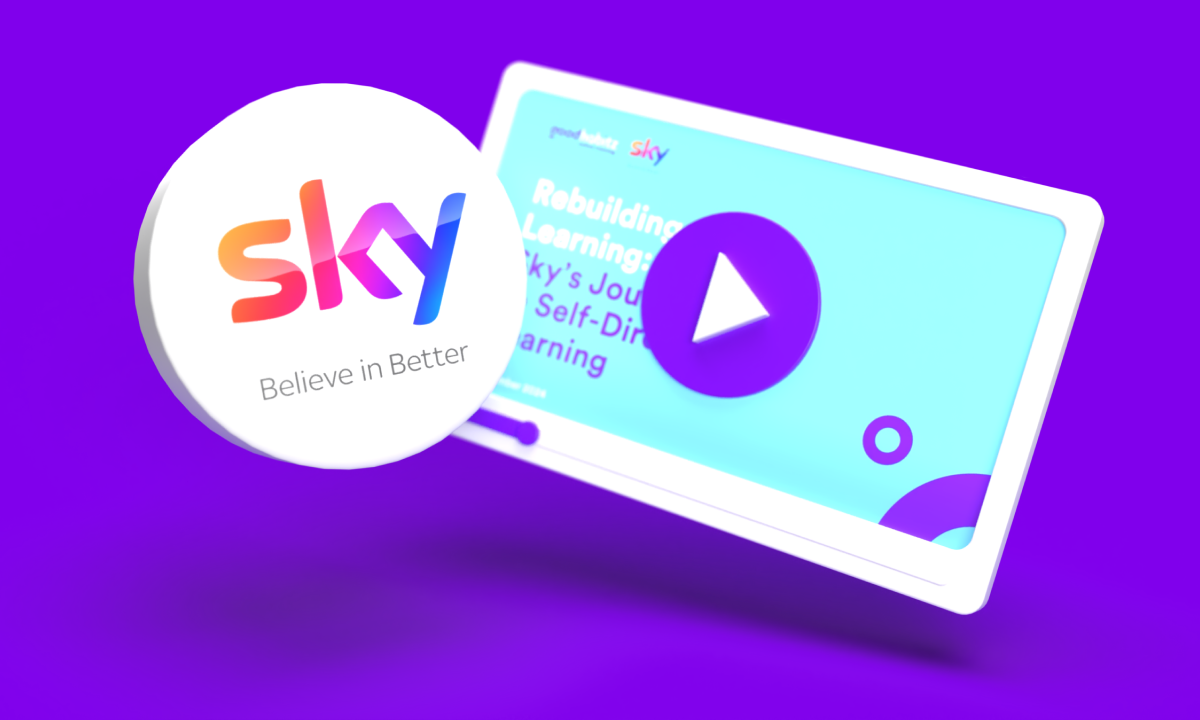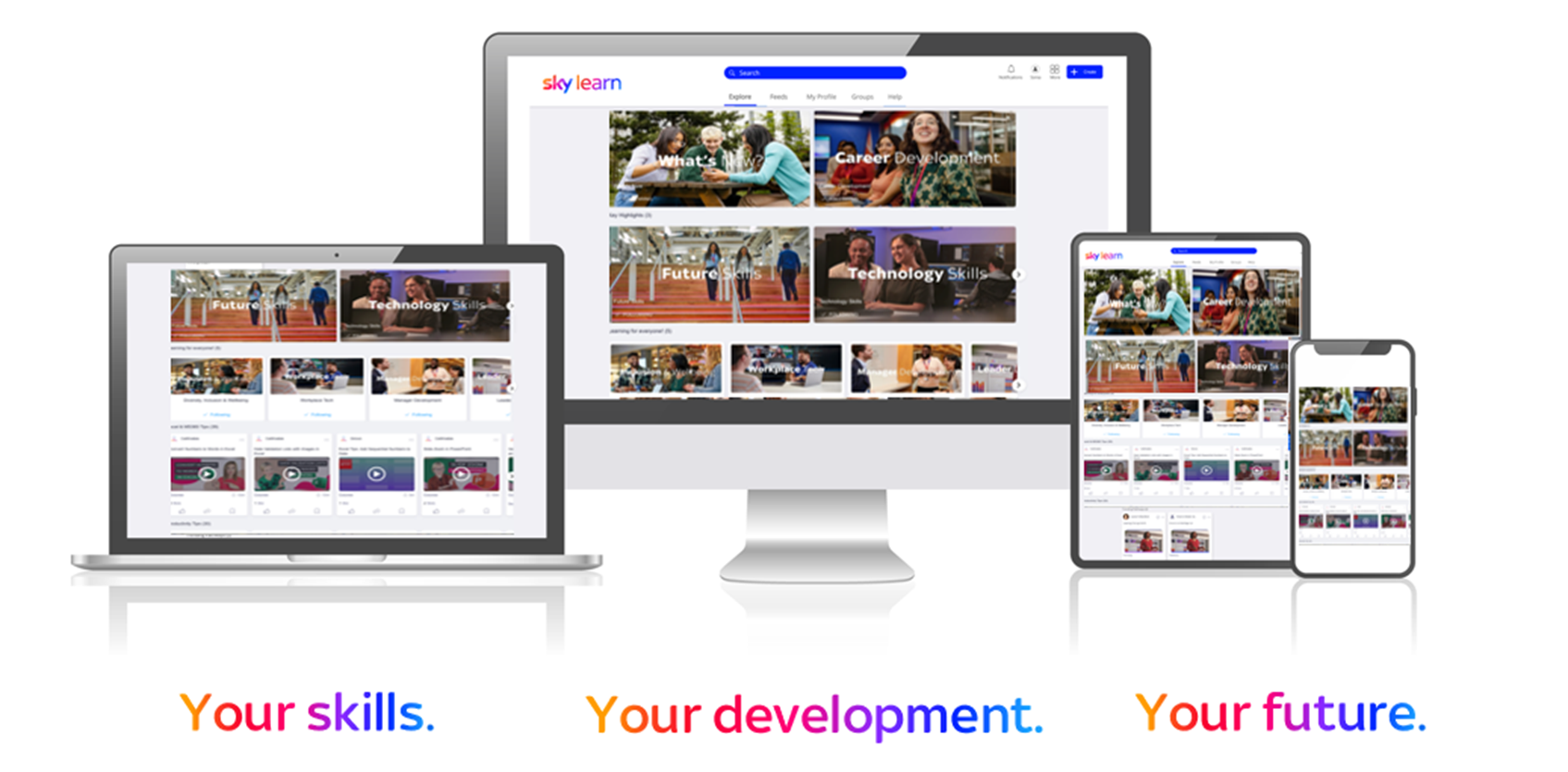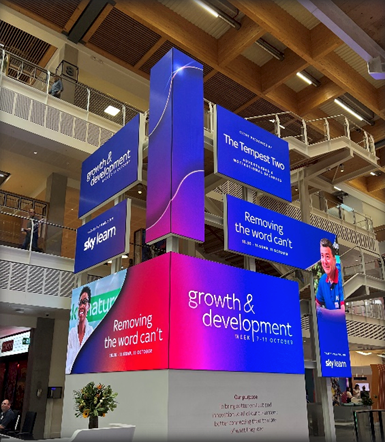
1. Streamline Learning with Centralised Access
At the heart of Sky’s success lies a strategic decision to simplify and centralise their learning landscape. Previously, their employees had to navigate over 15 separate learning platforms, creating a fragmented experience that hindered engagement. By consolidating everything into one hub—Sky Learn—the team provided a seamless “single front door” for learning.
As Oksana noted, “We had a very disparate L&D landscape, which made it hard for employees to engage effectively. By centralising access, we’ve streamlined the experience and provided tools that make learning more intuitive and relevant.”
Why It Matters: Accessibility is a key enabler of self-directed learning. If employees find it difficult to locate relevant content, their motivation to engage diminishes. Sky Learn not only streamlined access but also enhanced the user experience with mobile-friendly capabilities and personalised content.
Actionable Insight: Evaluate your organisation’s learning platforms. Are they intuitive and easy to access? If not, consider consolidating your resources into a single platform that supports personalisation and mobile access. Tools like Learning Experience Platforms (LXPs) can help bridge the gap between accessibility and user engagement.
2. Curate Relevant Content that Builds Trust
To engage employees, Sky linked their learning content directly to the organisation’s values and strategic goals. For example, they introduced “Sky Skills” - a series of curated digital learning journeys aligned with the company’s core values and skills framework. This approach not only contextualised learning but also helped employees trust the content provided.
Christine Munk explained, “One of the first experiences employees have with Sky Learn is seeing how the content aligns with our organisational values. It’s not just about learning for learning’s sake—it’s about connecting it to something meaningful.”
Why It Matters: When learning content is directly tied to organisational goals and individual career growth, employees are more likely to perceive its value. Furthermore, curated content removes the overwhelm of too many options by providing clear, relevant pathways.
Actionable Insight: Audit your learning content to ensure it aligns with company values and strategic objectives. Consider creating curated learning paths tailored to specific roles, levels, or skill sets. Highlight how these paths connect to employees’ career growth and the broader goals of the organisation.

3. Activate Learning Advocates to Build Momentum
Sky recognised that their L&D team alone could not drive a self-directed learning culture. To amplify their efforts, they identified and empowered a network of learning champions across the organisation. These early adopters became key advocates, driving awareness and engagement in their respective teams and departments.
“We couldn’t do it alone,” said Oksana. “Building a community of early adopters and learning champions has been instrumental. They help us embed learning deeply into their respective areas.”
Why It Matters: Peer influence can significantly boost participation in learning initiatives. Employees are more likely to trust and follow the recommendations of colleagues who understand their day-to-day challenges and needs.
Actionable Insight: Identify enthusiastic employees who can act as learning champions. Equip them with tools, training and resources to promote learning initiatives. Regularly engage this group through workshops, recognition programmes, and exclusive updates to keep them motivated and aligned with your goals.
4. Use Events to Create Excitement Around Learning
Sky successfully drove engagement through creative events like their ‘Growth & Development Week’, a week-long festival of live learning events. By offering a mix of internal and external speakers, panel discussions and workshops, they provided employees with a broad catalogue of choices. These events not only drew employees to the Sky Learn platform, but also sustained their interest through follow-up resources like digital handouts and curated content.
Christine elaborated, “We wanted to make learning exciting and relevant. Growth & Development Week not only showcased a variety of learning opportunities but also highlighted the connection to personal and professional growth.”
Why It Matters: Learning events inject energy and visibility into your L&D initiatives. They can serve as a launchpad to introduce new tools, highlight key themes, or address emerging skills gaps.
Actionable Insight: Plan periodic events that encourage employee engagement with learning. Focus on organisational priorities or align with key themes during the year (such as Learning At Work Week in May) to create relevancy. You can use internal knowledge experts and learning vendors as key speakers during these events.
5. Foster a Culture of Ownership and Internal Knowledge Sharing
Sky’s ultimate goal was to shift the mindset around learning from not only being a top-down directive, but also a self-driven practice. They encouraged this through initiatives like user-generated content, where employees could create and share learning materials, and by embedding learning into daily workflows. For instance, they aligned learning campaigns with real-world tasks and made resources accessible on mobile devices to accommodate busy schedules.
“Learning isn’t just about courses,” Oksana emphasised. “It’s about creating opportunities and embedding learning into the moments that matter in daily work.”
Why It Matters: A true culture of self-directed learning requires employees to see learning as part of their everyday work rather than an additional burden. Providing tools and opportunities for employees to create content not only empowers them but also ensures the content feels relevant and trustworthy.
Actionable Insight: Embed learning into daily workflows by making it relevant and accessible at the right moment. Not all learning initiatives should be broadly companywide - curated playlists of content that are tailored to specific roles, complemented with user-generated from internal subject matter experts, can deliver a high degree of relevancy and application, leading to more engagement and effectiveness.

Looking Ahead: The Future of Self-Directed Learning
Sky’s journey underscores that building a self-directed learning culture is a continuous process, best supported by multi-faceted approach designed to attract, engage and inspire. Their experience highlights the importance of aligning learning initiatives with business needs and fostering a sense of ownership among employees.
Looking to the future, with support from GoodHabitz, they plan to focus even more on skills-based learning, personalised learning journeys and deeper integration of learning into the flow of work.
For more information on Sky and how they rebuilt learning, click here to watch the webinar recording.
